Jonathan Schofield on the anger over the destruction of heritage assets in Angel Meadow
So, some steps, some retaining walls, some setts (shaped cobbles) are to disappear or be re-positioned in an area of the city unfamiliar to most. Who gives a toss, eh?
Well, many people do. This explains the present anger in Angel Meadow. Interested parties think this quiet cornucopia of history, just north of the Co-op’s One Angel Square, should be treated with the utmost respect - and not only for the 35,000 plus dead who lie in St Michael’s churchyard and the former Parochial Burial Ground.
To remove the granite setts of Aspin Lane, plus the restored access steps that LS Lowry sketched and painted is beyond understanding, wiping out irreplaceable heritage.
This is an area ripe for development, and the Far East Consortium (FEC) are obliging, with for starters, a pair of 22 and seventeen storey towers, delivering 286 apartments called The Gate and The Stile. These buildings, part of the larger Meadowside scheme, are presently under construction and lie between Aspin Lane and Dantzic Street. A July planning application highlights the often competing claims of heritage and investment.
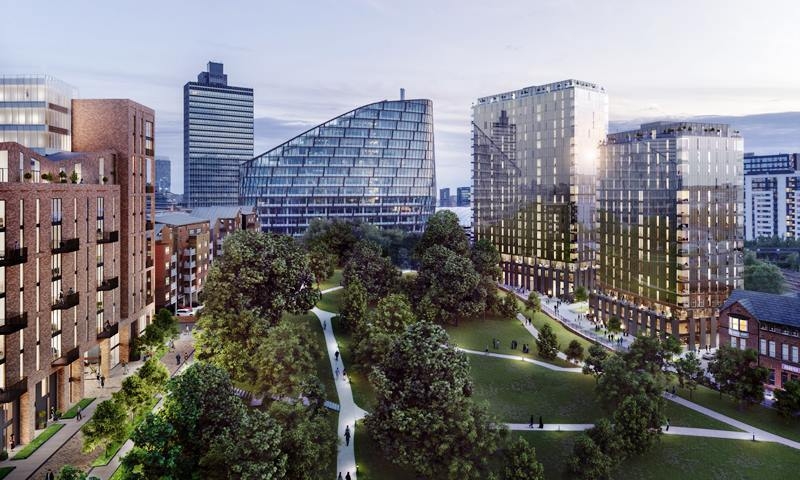
Richard Paul Long of the Friends of Angel Meadow (FOAM), says: “Despite all the history and heritage, Angel Meadow’s characterful streetscape is to be torn up. Many of the setts on Aspin Lane, the primary gateway into medieval Manchester, featuring on its oldest map, have been torn up and the evocative curved lane will be re-laid in a new pixilated grid form.
“Scenes captured by local painter LS Lowry, including the steps and boundary into the lower park, will cease to be referenced in the new layout and long buried bodies disturbed. The view of the old church wall, built from local stone, and the lower burial ground wall (built in 1888 as part of an early Open Spaces Society dream to improve the lives of the poor) will be cluttered with modern seating and low-level planting. A remnant of St. Michael’s Hall on Gould St will go, along with its small font once filled with vinegar during the cholera epidemic of 1832 to sanitise money, allowing trade to continue.”

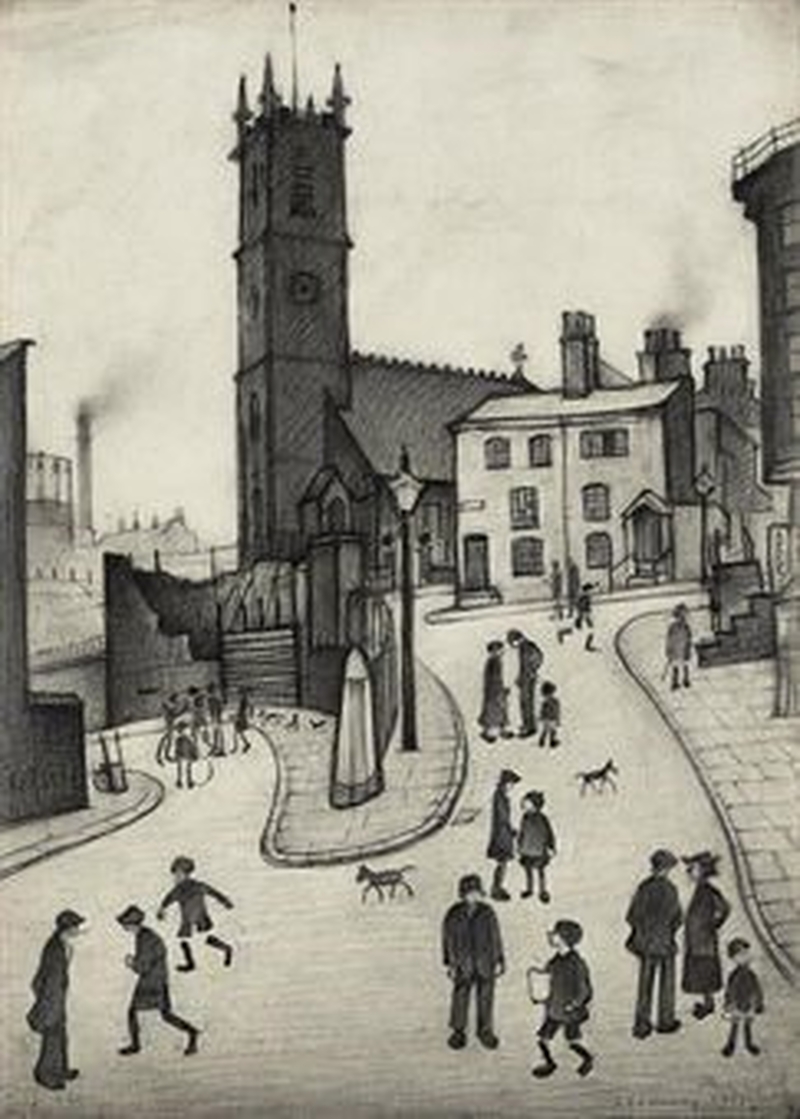
What really irks FOAM and others is that this process has already begun. Sibby, a Manchester tour guide, says: “I’ve guided people around Angel Meadow for 10 years. It’s an amazing place with a fascinating and important social history. During the Industrial Revolution it was a notorious slum area, with horrendous cellar dwellings and was the location of Manchester’s ‘Irish Town’.
“The proposed changes aren’t ‘improvements to the edges of the park’ as claimed in the planning heritage statement. Removing sections of the Parochial Burial Ground boundary walls (and potentially disturbing the remains of the dead) is despicable.
“To also remove the granite setts of Aspin Lane, plus the restored access steps that LS Lowry sketched and painted is beyond understanding, wiping out irreplaceable heritage. How can all this even be contemplated, just to provide modern landscaping for private flats? The few remaining heritage features of the area should be preserved not destroyed. Manchester development proposals are supposed ‘to be sensitive to the inherent values of identified heritage assets.’ Don’t the burial ground and Lowry’s Steps count?”
Despite a request for a response FEC have declined to offer Confidential any comment. This is a shame. Developers and planners should bring people along with them. They should not give the impression they can ride roughshod over the concerns of people especially when the latter care so deeply about the details that give a city individuality, that help reveal how the city arrived in the here and now.
Angel Meadow is special, in part, because its nineteenth century and early twentieth century history is so dark. Properly explained it reflects many issues that are alive across the globe in 2019, the exploitation of natural resources and human labour, the degradation of people’s lives.
This dark history is at odds, of course, with the shiny marketing material of new apartments. The website for Meadowside emphasises the green space of Angel Meadow, yet does not mention, at any point, that under the grass lie thousands of dead, often buried in pits, as their families couldn’t afford an individual plot.
Instead, the marketing has straplines such as ‘pretty city living’ or ‘where glass meets grass and concrete meets conkers’ despite there being no horse chestnut trees in the park. This is wrong-headed. Ask any tour guide about the new city residents who come on their tours and they will tell you the newcomers want to learn about the place in which they have invested, warts and all. They love the richness that context gives their adopted home. Most new residents moving into Angel Meadow will find its history part of the attraction, and they will want the seemingly small heritage details preserved.
To be fair to FEC people who buy into Meadowside will make an annual contribution to the upkeep of Angel Meadow park. So the FEC development will materially aid the park. I should say at this point that I have conducted tours for FEC of Angel Meadow and the wonderful Irk Valley.
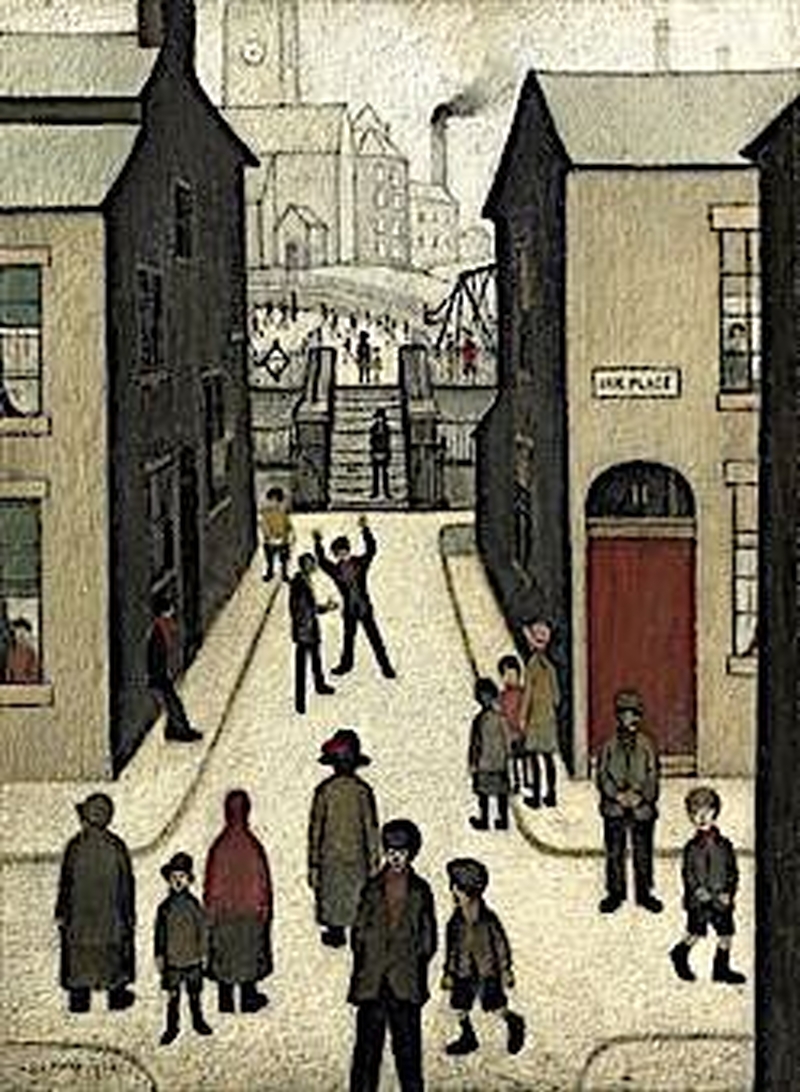
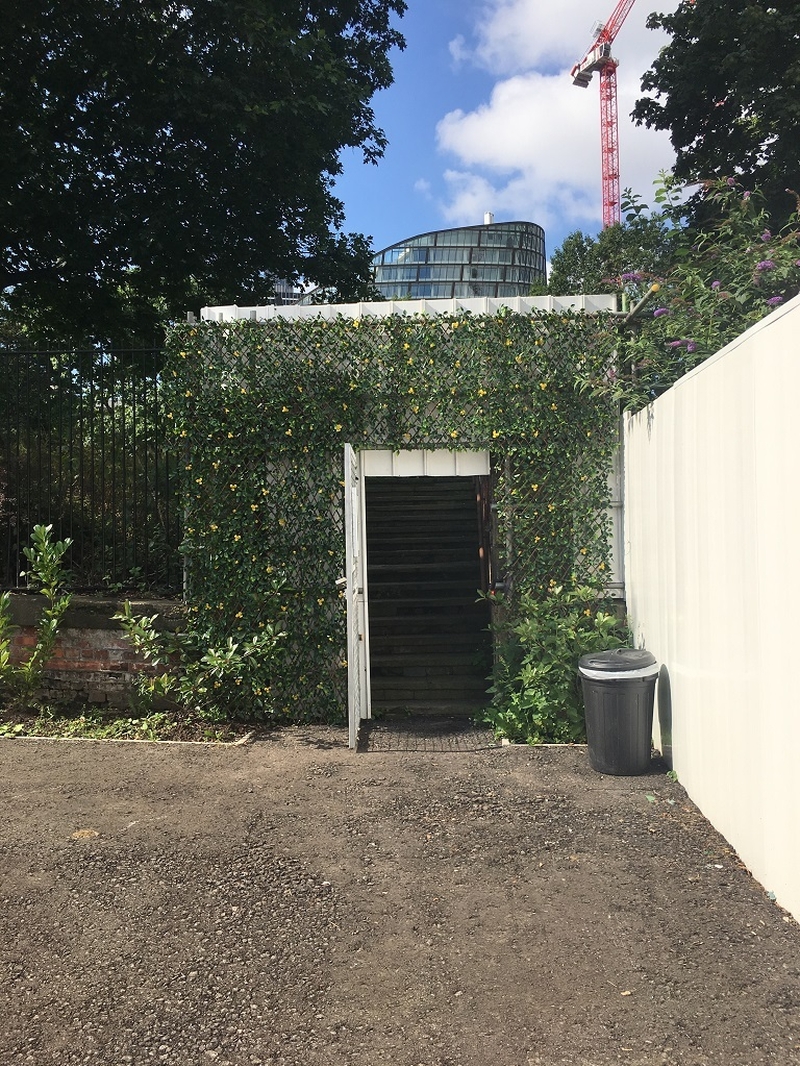
Back to Richard Paul Long of FOAM, and the steps, the setts and the walls.
“From the very outset,” says Richard Paul Long, “Foam made clear to those involved of the desire to see the full restoration of the original boundaries; to see key historical elements preserved in a way that the past can still be read. As a Manchester Place Funding recipient this entire Meadowside scheme has been underwritten with public money with little consideration of those who also invest in the city.
“By restoring the heritage boundaries of Angel Meadow park there is a chance to do something truly independent of thought here; to be genuinely original in rebuilding Angel Meadow as a positive epitaph to the “hell on earth” of its past, as Friedrich Engels called it, and be different in the way we reconstruct its broken public realm.
Manchester does things differently it proclaims but in reality, it just papers over the cracks in its walls then demolishes them and silences its history in search of progress.”
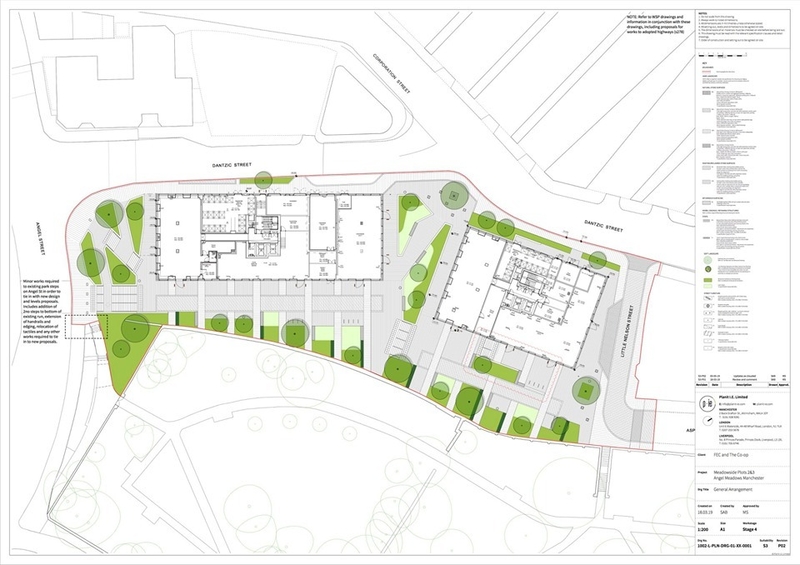
Not everybody might agree with that last sentence.
Yet planning applications that ignore what interested citizens deeply feel, and developers who refuse to respond to subsequent criticism reinforce the idea that the concerns of individuals and groups who aren’t directly involved in rebuilding central Manchester and Salford are peripheral at best and to be dismissed at worst.














